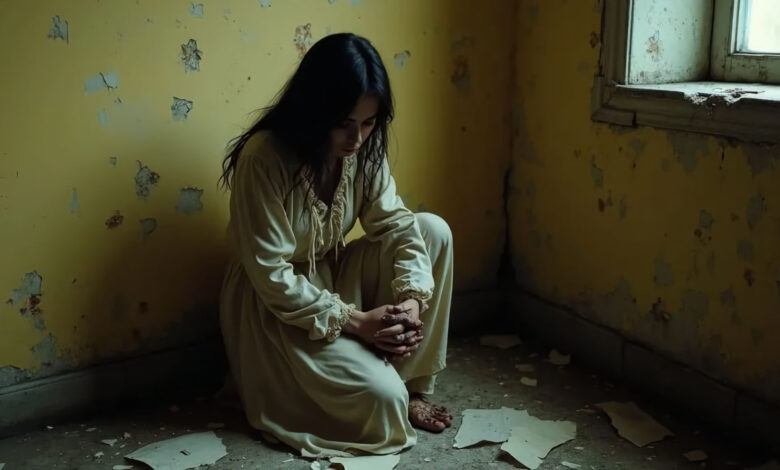
Author: Charlotte Perkins Gilman
Published: 1892
Genre: Short Story / Psychological Fiction / Proto-Feminist Literature
Setting: A secluded country estate in 19th-century America
⭐ Why It Matters
The Yellow Wallpaper is a foundational feminist text and a brilliant early example of psychological horror. Based on Gilman’s own experiences with postpartum depression and the oppressive “rest cure,” it captures how women’s voices and sanity were often dismissed in the name of medical science and male authority.
Though American, it’s often studied in UK schools for its thematic depth and style.
👥 Main Characters
- Unnamed Narrator – A young woman suffering from postpartum depression, confined by her husband’s treatment. Her descent into madness is the story’s central arc.
- John – Her husband and physician. Rational, controlling, and dismissive of her feelings.
- Jennie – John’s sister, a model of domestic duty who reinforces the narrator’s confinement.
- The Woman in the Wallpaper – A mysterious figure the narrator begins to see trapped behind the wallpaper’s pattern — a symbol of her own psychological imprisonment.
📚 Plot Summary
🔹 A Rest Cure
The narrator is taken to a rented country house to “recover” from what we now recognise as postpartum depression.
Her husband John insists she follow the “rest cure” — no writing, no stimulation, no work — just rest and fresh air.
She keeps a secret diary (the text we’re reading), writing in secret when she can.
🔹 The Wallpaper
Confined to a former nursery room with hideous yellow wallpaper, the narrator becomes obsessed with its pattern — seeing movement beneath it, then a trapped woman behind it.
As weeks pass, her mental state unravels, but she gains clarity in her madness, believing she understands the wallpaper’s true meaning.
🔹 Descent into Madness
The narrator begins creeping around the room at night, tearing at the wallpaper to “free the woman” within.
She identifies more and more with the trapped figure, saying:
“I suppose I shall have to get back behind the pattern when it comes night.”
🔹 Climax
In the final scene, the narrator has completely descended into psychosis. She has torn down the wallpaper and now believes she is the woman who was trapped inside it.
John finds her crawling around the room and faints — a symbolic reversal of power.
🧠 Themes & Takeaways
- Mental Illness & Misdiagnosis – The narrator’s worsening condition reflects the failure of male-dominated medicine to understand women’s emotional needs.
- Entrapment & Liberation – The wallpaper becomes a symbol of domestic confinement, and the narrator’s madness is both tragedy and escape.
- Feminist Resistance – The story critiques the social norms that silenced and infantilised women, especially in marriage and medicine.
- Symbolism & Unreliable Narration – As the narrator’s mind fractures, her perspective becomes unreliable, drawing the reader deeper into her experience.
- The House as Prison – The setting is beautiful and quiet, but functions as a mental cage.





